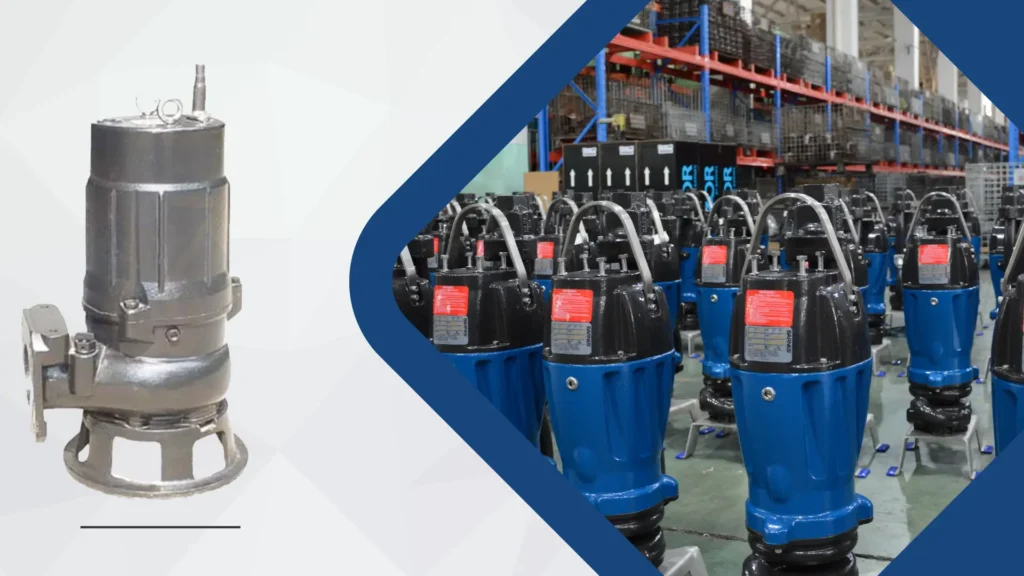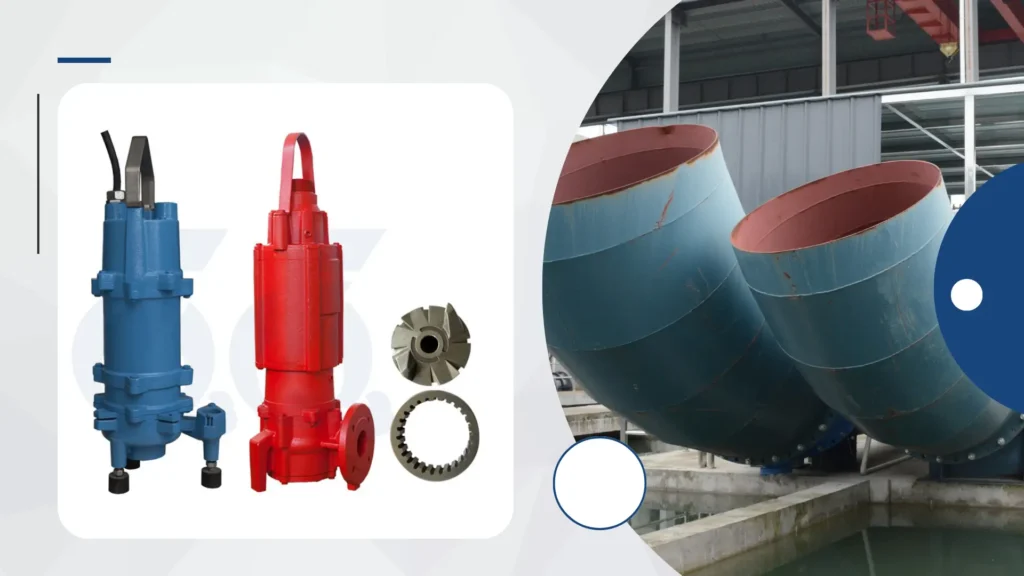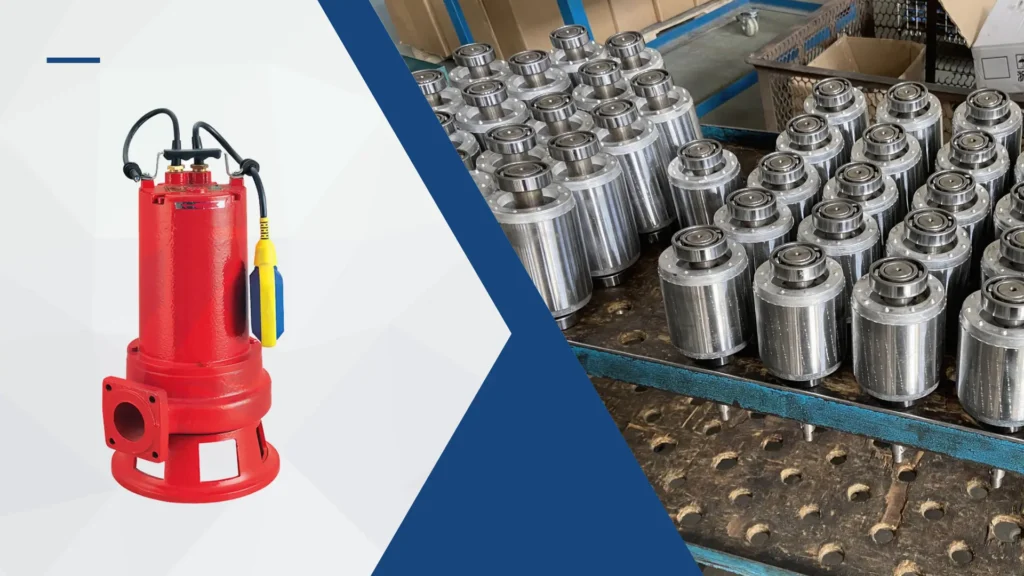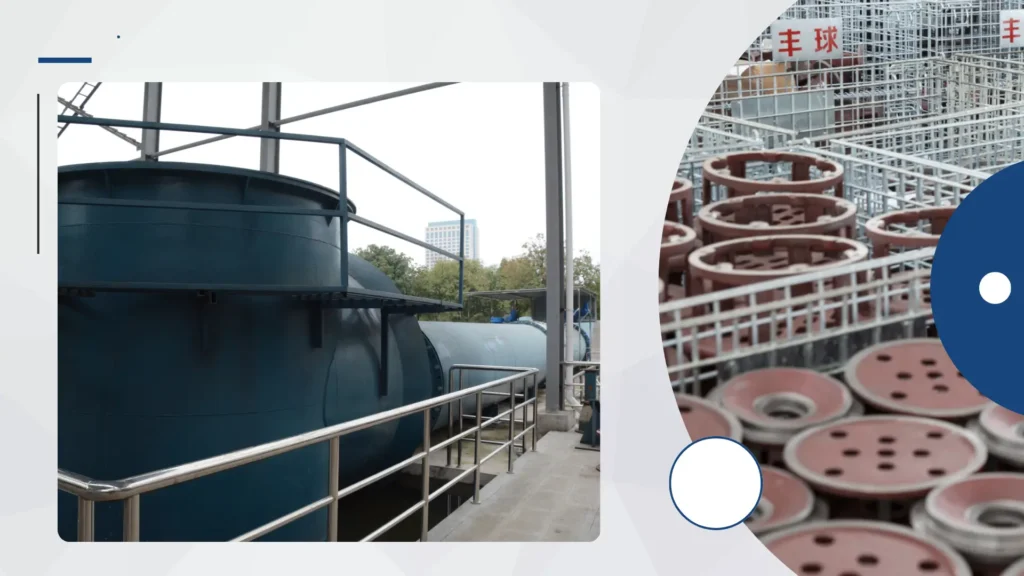When it comes to HVAC systems, energy efficiency is a top concern for both cost – saving and environmental reasons.
Submersible pumps, though often overlooked, play a significant role in how efficiently these systems operate.
For those looking to purchase equipment for their HVAC setup, understanding the impact of submersible pumps on energy efficiency can help make a more informed decision.
This article will explain, in simple terms, how these pumps affect the energy performance of HVAC systems, making it easy to grasp their importance.
How Do Submersible Pumps Integrate with HVAC Systems?
Facilitation of Water Circulation
In systems that use water or other fluids to transfer heat, submersible pumps move the fluid through pipes, ensuring that heat is distributed evenly throughout the space.
Their ability to maintain steady flow ensures that every part of the building receives consistent heating or cooling, avoiding hot or cold spots.
This even distribution also reduces the strain on other HVAC components, as the system doesn’t need to overcompensate for uneven fluid movement.
Collaboration with Heat Exchangers
Submersible pumps move the heated or cooled fluid to and from heat exchangers, where heat is either added to or removed from the fluid.
This collaboration between the pump and heat exchanger is key to maintaining the desired temperature in the building.
This synergy also minimizes energy loss between the pump and exchanger, keeping the entire process streamlined.
Support for Cooling Towers
They support the operation of cooling towers in large HVAC setups. In commercial or industrial HVAC systems with cooling towers, submersible pumps circulate water through the tower to dissipate excess heat.
This helps keep the system’s cooling process efficient and effective.
Their ability to handle high volumes of water ensures the cooling tower can expel heat quickly, preventing the HVAC system from overheating and working harder than necessary.
This support also allows cooling towers to operate at lower capacities when demand is low, saving additional energy.
What Makes Submersible Pumps More Energy-Efficient Than Other Pump Types in HVAC?
Submerged Design for Reduced Energy Loss
Since they are placed directly in the fluid they pump, submersible pumps don’t have to work as hard to draw the fluid in, minimizing energy waste that occurs when pumps have to pull fluid from a distance.
This design eliminates the need for priming, a process that consumes extra energy in non-submersible pumps to fill the intake with fluid.
Being submerged also reduces the risk of cavitation—bubbles forming in the fluid—which can waste energy and damage pump components.
Enhanced Motor Efficiency
They have better motor efficiency under load. The motors in submersible pumps are designed to operate efficiently even when they are working at full capacity.
This means they convert a higher percentage of electrical energy into mechanical energy, using less power overall.
The motors are also cooled by the surrounding fluid, preventing overheating that can reduce efficiency in other pump types.
This consistent cooling allows them to maintain peak performance without energy-draining thermal shutdowns.

Reduced Friction Loss
They experience less friction loss in fluid movement. The way submersible pumps are positioned and designed allows the fluid to flow more smoothly through them, reducing friction.
Less friction means the pump doesn’t need to use extra energy to overcome resistance, saving on power consumption.
Their streamlined internal components and direct fluid access minimize turbulence, which is a major source of friction in other pump designs.
How Do Submersible Pumps Reduce Energy Waste in HVAC Operations?
Consistent Flow Rates
They provide consistent flow rates to avoid overworking the system. Submersible pumps maintain a steady flow of fluid, which prevents the HVAC system from having to cycle on and off frequently.
Consistent flow also ensures that heat exchangers and cooling towers operate at optimal efficiency, as they rely on a steady supply of fluid to function properly.
Avoiding flow fluctuations eliminates the need for the system to “catch up” after periods of low flow, which wastes energy.
Precise Control Options
Many submersible pumps can be adjusted to match the exact flow needs of the HVAC system at any given time.
These controls often integrate with building management systems, allowing automated adjustments based on real-time temperature data.
This level of precision ensures the pump never uses more energy than required for the current load.
Lower Maintenance-Related Energy Losses
Due to their sealed design, submersible pumps are less prone to leaks and mechanical issues that can cause the HVAC system to work harder.
Fewer breakdowns and less need for repairs mean the system runs more efficiently over time.
The sealed design also keeps contaminants out, reducing wear on internal parts that can lead to inefficient operation.
What Features of Submersible Pumps Enhance HVAC Energy Efficiency?
Adaptive Energy Use with Variable Speed Drives
These drives let the pump adjust its speed based on the HVAC system’s current needs.
When less fluid circulation is required, the pump slows down, consuming less energy, and speeds up when more is needed.
These drives also provide soft-start capabilities, gradually increasing speed to avoid the energy surge of sudden full-power startups.

Optimization of Fluid Movement with High-Efficiency Impellers
The impellers in submersible pumps are designed to move fluid with minimal energy input.
Their shape and size are engineered to push the fluid efficiently, reducing the amount of power the pump needs to operate.
These impellers are often made from lightweight, durable materials that reduce rotational resistance, further lowering energy use.
Prevention of Air Leaks with Sealed Motor Enclosures
The tight seals around the motor keep air from entering or escaping, which helps maintain the pump’s efficiency.
Air leaks can cause the motor to work harder, increasing energy use, so these seals are crucial.
The enclosures also protect the motor from moisture and debris, which can degrade performance over time.
This protection ensures the motor operates at peak efficiency for longer, avoiding the energy losses that come with damaged or corroded components.
How Do Submersible Pumps Impact the Overall Energy Consumption of HVAC Systems?
Reduction of Peak Energy Demand
By operating efficiently and maintaining steady performance, submersible pumps help reduce the maximum amount of energy the HVAC system uses at any one time.
This can lead to lower utility costs, as some energy providers charge more for peak usage.
Their consistent operation avoids sudden energy spikes that often occur with less efficient pumps, keeping the system’s energy profile stable.
Decreased Workload on HVAC Components
When the pump moves fluid efficiently, components like boilers and chillers don’t have to work as hard to heat or cool the fluid.
This shared effort lowers the overall energy consumption of the entire system. Efficient fluid circulation ensures that heated or cooled fluid reaches its destination quickly, reducing the time boilers and chillers need to run.
This coordinated efficiency also extends the lifespan of these components, as they experience less wear from overwork.
Extended Intervals Between System Cycles
A well-functioning submersible pump helps the HVAC system maintain the desired temperature for longer periods, reducing how often the system needs to turn on to adjust the temperature.
Longer intervals between cycles also reduce stress on the system’s motors and controls, which can degrade over time with frequent startups. This stability in operation further supports consistent energy efficiency.

Can Submersible Pumps Help HVAC Systems Meet Energy Efficiency Standards?
Compliance with Efficiency Benchmarks
They align with industry-recognized efficiency benchmarks. Many submersible pumps are designed to meet or exceed established energy efficiency standards for HVAC equipment.
Using such pumps helps ensure that the entire system is more likely to meet these standards.
Their efficiency ratings are often verified by third-party organizations, providing clear documentation for compliance audits.
Support for Green Building Certifications
For buildings aiming to achieve green certifications, having energy-efficient components like submersible pumps is beneficial.
These pumps contribute to the points needed for certification by reducing the building’s overall energy footprint.
Their low energy consumption and minimal environmental impact align with the sustainability goals of such certifications.
Assistance with Local Energy Regulations
As more regions implement strict energy-saving regulations for buildings, using submersible pumps can help HVAC systems meet these requirements.
This avoids potential penalties and ensures the building is up to code. Their efficiency features are often tailored to address region-specific regulations, making them a reliable choice for compliance.
How Do Proper Sizing and Installation of Submersible Pumps Affect Energy Efficiency in HVAC?
Correct Sizing to Prevent Energy Waste
A pump that’s too large for the HVAC system will use more energy than necessary, as it will pump more fluid than needed.
Properly sized pumps match the system’s requirements, using only the energy required for optimal performance.
Oversized pumps also create unnecessary pressure in the system, which can lead to leaks and increased energy use in other components.

Professional Installation for Optimal Alignment
When installed correctly, submersible pumps are aligned properly with the HVAC system’s pipes and components.
This reduces friction and ensures smooth fluid flow, which helps the pump operate efficiently without extra energy use.
Poor alignment can cause vibrations that waste energy and damage the pump over time.
Proper Placement to Minimize Pressure Drops
Installing the pump in a location that avoids unnecessary bends or restrictions in the pipework reduces pressure drops.
Lower pressure drops mean the pump doesn’t have to exert extra energy to maintain the required flow, saving energy.
Strategic placement also ensures the pump is easily accessible for maintenance, reducing the risk of neglect that can lead to efficiency losses.
What Maintenance Practices for Submersible Pumps Preserve HVAC Energy Efficiency?
Regular Cleaning for Peak Efficiency
Cleaning the pump regularly removes this debris, ensuring it operates at peak efficiency.
Debris can also block or damage impellers, reducing their ability to move fluid efficiently.
Regular cleaning preserves the pump’s design performance, ensuring it continues to use energy as intended.
Lubrication to Minimize Friction
Keeping the pump’s moving parts properly lubricated minimizes friction, which in turn reduces the amount of energy the pump needs to operate.
This simple maintenance task helps maintain efficiency over the pump’s lifespan.
Inadequate lubrication can cause parts to wear prematurely, leading to increased friction and energy use.
Inspection of Seals to Prevent Leaks
Damaged seals or gaskets can cause fluid leaks, which make the pump and the entire HVAC system work harder to compensate.
Regular inspections and replacement of worn seals keep leaks at bay, preserving energy efficiency.
Leaks can also introduce air into the system, causing cavitation and further energy loss.

And More:
How to Evaluate and Select a Configuration of Multiple Pumps
Conclusion
Submersible pumps have a notable impact on the energy efficiency of HVAC systems, from their integration into the system to their design features and maintenance needs.
For those looking to purchase equipment for their HVAC setup, considering the role of submersible pumps in energy efficiency is a smart move.
Choosing the right submersible pump, ensuring proper sizing and installation, and keeping up with maintenance can lead to a more efficient, cost – effective, and reliable HVAC system.

